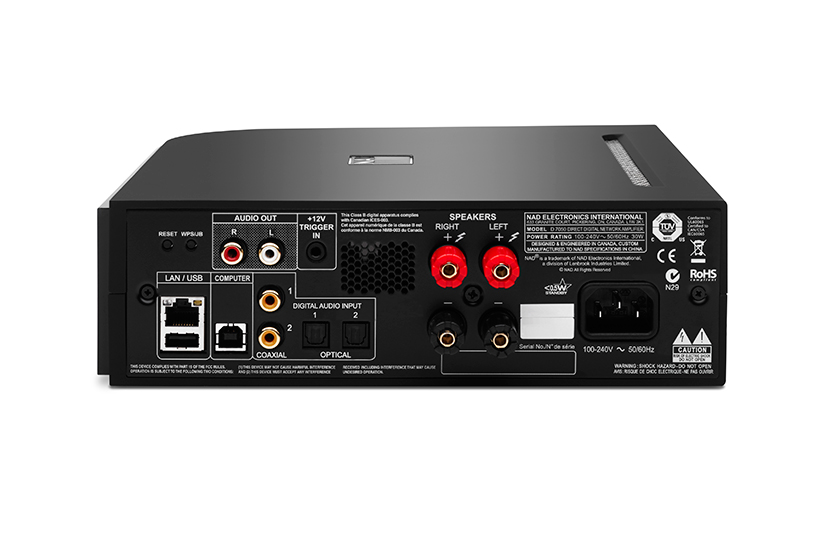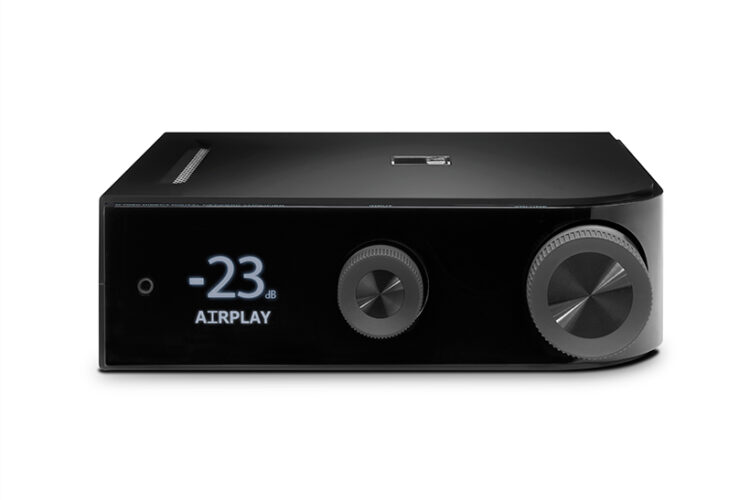The term all signing and dancing gets bandied around rather a lot when it comes to audio electronics but in the case of the NAD D7050 it would appear to be appropriate. The sheer amount of badges shown on its web page gives you some idea of its capabilities; these include Bluetooth aptX, Apple Airplay, DLNA certification and Spotify. The latter would appear to be the killer app when it comes to audio equipment, it's the streaming service that has achieved the greatest popularity yet is a rare feature in audio hardware because of licensing issues. You can of course stream Spotify from your phone/tablet/PC to any wireless receiver but there could be a sonic benefit in avoiding wireless transmission even with the 256kbps of Spotify at its best. What the NAD does is use Spotify Connect, which requires a Premium account and the Spotify app on a wireless device to control a Spotify stream. It’s not sending the audio from the wireless device but telling the NAD what to get from Spotify. This avoids the constant updating that apps like Spotify seem to require by using the streamer as a portal rather than a full control point.
The NAD’s own control app is pretty basic, essentially it lets you select input and change volume which can be done as easily and more quickly with the supplied remote handset. I was surprised to find that the D7050 does not have a control app that will let it pull media off of a NAS drive, it’s not a UPnP device as such. You can get round this by using third party software such as PlugPlayer or by sending data to it with JRiver Mediacentre running on a PC. One feature that it could do with but which doesn’t really fit in with its general approach is internet radio access, being a gateway rather than a source you have to get your radio onto another device and send it on to the NAD.

As an amplifier the D7050 uses technology trickled down from the M2 digital amp dubbed ‘direct digital’, this because the signal remains in digital form until it reaches a two-pole analogue reconstruction filter at the speaker outputs. The latter filters out spurious noise above the audio band. It’s a pretty radical approach and one that costs quite a bit more when put into heavier casework such as NAD’s master series. It’s also one of the key differences between this unit and the more affordable D3020 which has a more conventional amplifier onboard. The D7050 doesn’t sound particularly powerful but at 50 watts per channel it has a third the power of my ATC P1 power amp so something has to give. I found however that the speaker match was really the issue, PMC fact.8s are a little too racy for its blood, which isn’t surprising given the price. Cambridge Aero 6 floorstanders on the other hand proved rather better suited, now we had plenty of bass weight and Rickie Lee Jones’ Easy Money retained much of its charm and scale, with a nice sheen to the vibraphone. The combination times well if not right on the button. Tonally however the balance sounds natural and imaging has good depth. Dynamics are also well handled if not quite up with the best integrated amps in this price range. But it’s a lot more than an amplifier so such limitations are forgivable, it’s more about a one box solution that takes up minimal space and does most everything the modern music lover needs. It’s important to stress that it can produce decent musical entertainment, the D7050 may not be the last word but it’s more gripping than some more expensive one box solutions that I’ve had of late.

It needs a vital and expressive speaker to reveal this and the best partner I found was Bowers & Wilkins’ new 684 S2, a floorstander at a similar price to the NAD with surprisingly good detail resolution. This pairing provided very agreeable musical entertainment of the sort that proved surprisingly hard to put down considering the overall system price. Imaging is broad, escaping the bounds of the speakers and extending upwards and backwards nicely as well. Leading edge definition means that timing stands up well and even recent Eminem, Groundhog Day, captured my imagination thanks to the clever use of effects in the mix.
If you look at the competition for this unit you can’t avoid the Apple-esque Sonos range, it put networked audio on the map and remains king of the hill as far as the wider world is concerned. NAD has a sister brand in Bluesound that has been created to compete in that arena, but it is also the place where the D7050 has to compete. What it offers that those names don’t is a decent amplifier, that means you can use proper loudspeakers and get engaging results. Build quality is good but could be stronger and the need to use a third party control app is less than ideal, but this unit is undoubtedly both flexible and capable, it’s about more than background music and that’s the key to its appeal. Music worth buying is worth listening to properly and the D7050 will let you do just that.


